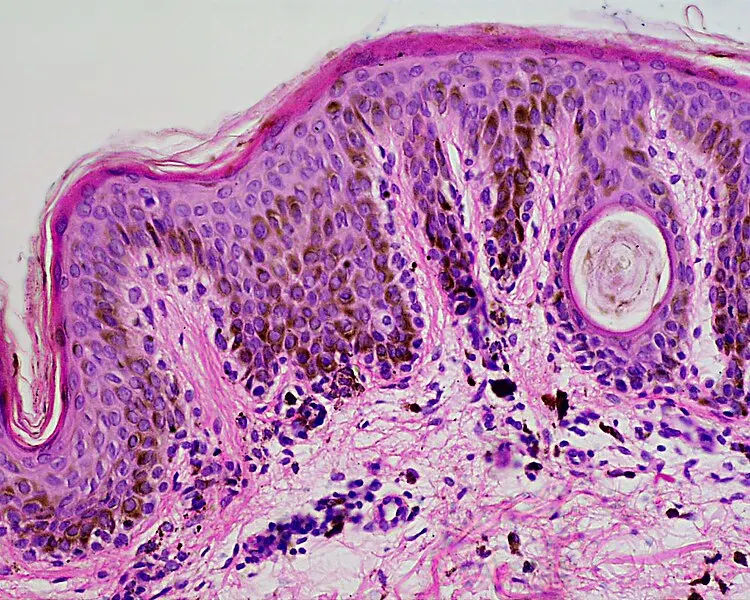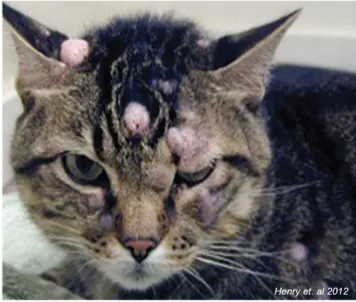Main Points of Post
Introduction: Unraveling the Mystery of Cat Skin Tumors
Have you ever noticed a strange bump on your cat’s skin and felt that familiar pang of worry? Understanding basal cell tumors can turn that anxiety into knowledge. These skin growths are common, especially in older cats, but knowing what they are and how to manage them can make all the difference for your feline friend.
What Are Basal Cell Tumors?
Basal cell tumors arise from the basal cells in the skin’s outer layer. Although they often appear as harmless lumps, it’s crucial to recognize that not all tumors are created equal. Understanding the difference between benign and malignant tumors can empower you to act quickly if needed.
Types of Basal Cell Tumors
- Benign Basal Cell Tumors: Most commonly non-cancerous, these tumors typically do not pose serious health risks. However, their presence might warrant monitoring for any changes.
- Malignant Basal Cell Tumors: Though rare, malignant tumors can invade surrounding tissues and require immediate attention. Recognizing early signs can be key to effective treatment.
Recognizing the Signs: Early Detection Matters

Being vigilant about your cat’s health is vital. Knowing the signs of basal cell tumors can help you catch issues early. Look out for new lumps, hair loss, or signs of irritation. The sooner you identify potential problems, the better the outcome can be for your cat.
Diagnosis: What to Expect at the Vet
If you notice anything unusual, a visit to the vet is crucial. Understanding the diagnostic process can help ease your concerns. Expect a thorough physical examination, and be prepared for tests like fine needle aspiration or biopsy to determine the tumor type.
Treatment Options: Choosing the Right Path
Once diagnosed, understanding your treatment options is essential. Options range from monitoring benign tumors to surgical removal for more aggressive growths. Knowledge about these choices can alleviate anxiety and guide you toward the best decision for your cat’s health.
1. Monitoring
For benign tumors that aren’t causing discomfort, your vet may suggest a watchful approach. Knowing that some tumors don’t require immediate action can be reassuring.
2. Surgical Removal
If a tumor is problematic, surgical removal is often the best course of action. This proactive approach can provide peace of mind and help ensure your cat’s long-term health.
3. Cryotherapy and Radiation
Less invasive treatments like cryotherapy may be suitable for specific tumors. Understanding these alternatives can provide options for care that align with your cat’s needs.
4. Chemotherapy
While not the first line of defense for basal cell tumors, chemotherapy may be necessary for aggressive cases. Knowing all your options allows you to make informed choices.
Post-Treatment Care: Supporting Recovery
After treatment, your cat may need special care. Being proactive in post-treatment care can make a significant difference in recovery. Follow your vet’s instructions closely, monitor for signs of complications, and ensure your cat has a calm, comfortable environment.
Prevention: Taking Proactive Steps
While not all basal cell tumors can be prevented, certain measures can help reduce your cat’s risk. Regular vet visits, a nutritious diet, and sun protection can all contribute to healthier skin. Understanding preventive care can be a game-changer in your cat’s health journey.
Emotional Impact: Caring for Your Cat’s Well-Being
Dealing with health concerns can be emotionally taxing. Recognizing the emotional weight of caring for a pet can help you seek support. Connecting with fellow pet owners or support groups can provide valuable comfort and advice during challenging times.
Conclusion: Empowering Your Cat Care Journey
Knowledge is your strongest ally when it comes to your cat’s health. By understanding basal cell tumors—what they are, how to recognize them, and how to respond—you can ensure your feline friend lives a long, healthy life. Regular check-ups, attentive care, and an informed approach will empower you to navigate any challenges that come your way. Your cat’s well-being is worth the effort!



